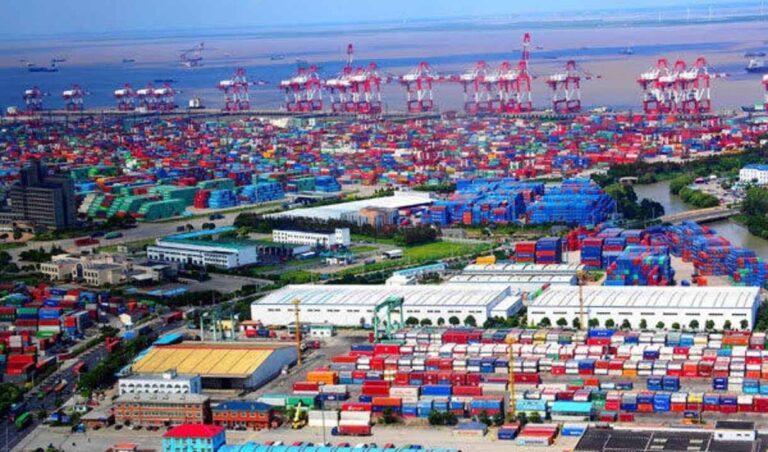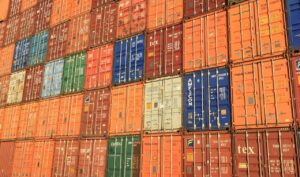Free Trade Zone: meaning, types, examples and more

What are Free Trade Zones (FTZs)
Free trade zones (FTZs) are designated areas within a country where goods can be imported, manufactured, and re-exported without being subjected to the country’s customs laws. They are set up to promote economic growth by encouraging foreign investment and facilitating trade. FTZs can offer various benefits such as tax incentives, streamlined customs procedures, and access to specialized infrastructure.
How Free Trade Zones work
Free Trade Zones (FTZs) are designated areas within a country where goods can be imported, manufactured, and re-exported without being subjected to the country’s customs laws. The concept of free trade zones dates back to the 19th century, but the modern version of FTZs originated in the United States in 1934 with the passage of the Foreign Trade Zones Act.
The main purpose of FTZs is to encourage economic growth by facilitating international trade and investment. By allowing businesses to import and export goods without having to pay customs duties, FTZs make it easier and cheaper for companies to do business internationally. In addition, FTZs often provide other benefits such as streamlined customs procedures, tax incentives, and access to specialized infrastructure like ports or airports.
Types of Free Trade Zones and their Characteristics
There are several types of FTZs, each with its own characteristics and advantages. Some of the most common types include:
1. Manufacturing and processing zones
These zones are designed for the production and assembly of goods. Businesses in these zones typically import raw materials or components, manufacture or assemble finished products, and then export them.
2. Export processing zones
These zones are focused on the production and export of goods. Businesses in these zones typically import raw materials or components, manufacture or assemble finished products, and then export them without paying customs duties.
3. Free ports
These are specialized zones within a port area that offer a range of services to businesses engaged in international trade, such as warehousing, storage, and distribution. Free ports often provide streamlined customs procedures and other benefits to make it easier and cheaper for businesses to do business internationally.
4. Special economic zones
These are designated areas within a country that offer a range of incentives and benefits to businesses, such as tax breaks, streamlined customs procedures, and access to specialized infrastructure. Special economic zones are often designed to attract foreign investment and encourage economic growth in specific regions or industries.
The specific characteristics of each type of FTZ vary depending on the country and the specific regulations governing that zone. However, some common advantages of operating in an FTZ include lower customs duties, reduced administrative costs, and access to specialized infrastructure or services. In addition, businesses operating in FTZs often benefit from a more favorable regulatory environment, which can make it easier to do business and attract foreign investment.
Advantages of operating in a Free Trade Zone
There are several advantages to operating in a Free Trade Zone (FTZ), which can make them an attractive option for businesses engaged in international trade. Some of the main advantages include:
- Tax incentives: Many FTZs offer tax incentives to businesses, such as exemptions or reductions on customs duties, value-added taxes (VAT), or corporate income taxes. These incentives can significantly reduce the cost of doing business and increase profitability for companies operating within the zone.
- Streamlined customs procedures: Customs procedures can be complex and time-consuming, especially for businesses engaged in international trade. FTZs often offer streamlined customs procedures to make it easier and faster for businesses to import and export goods. For example, customs inspections may be conducted more quickly or paperwork may be reduced.
- Access to specialized infrastructure: FTZs often have specialized infrastructure or services that are designed to support businesses engaged in international trade. This may include ports, airports, warehousing facilities, or transportation networks. By providing access to these resources, FTZs can make it easier and cheaper for businesses to move goods in and out of the zone.
- Reduced administrative costs: Operating in an FTZ can help businesses reduce administrative costs, such as paperwork, record-keeping, and compliance. This is because the regulations governing FTZs are often simpler and more streamlined than those governing international trade outside of the zone.
- Access to new markets: FTZs can provide businesses with access to new markets by facilitating trade and investment across borders. By operating within an FTZ, businesses can tap into new customer bases and expand their global reach.
Disadvantages of Free Trade Zones
While there are many advantages to operating in a Free Trade Zone (FTZ), there are also some potential disadvantages that businesses should be aware of. Some of the main disadvantages include:
- Limited domestic market: FTZs are designed to facilitate international trade, which means that businesses operating within the zone may have limited access to the domestic market. This can be a disadvantage for businesses that rely heavily on local customers or suppliers.
- Regulatory uncertainty: FTZs are often subject to different regulations than the rest of the country, which can create regulatory uncertainty for businesses operating within the zone. Changes to regulations or policies governing the zone can have a significant impact on businesses, and may be difficult to anticipate or plan for.
- Dependence on exports: Businesses operating within an FTZ may be heavily dependent on exports, which can make them vulnerable to changes in global demand or economic conditions. This can be a disadvantage for businesses that are looking for more stability or diversification in their operations.
- Competition: FTZs often attract a large number of businesses, which can create intense competition within the zone. This can make it difficult for businesses to differentiate themselves or compete on price, and may lead to lower profit margins.
- Administrative costs: While operating within an FTZ can help businesses reduce administrative costs, there are still costs associated with complying with regulations and managing operations within the zone. These costs can be higher for businesses that are not familiar with the regulatory environment or that have complex operations.
Examples of Free Trade Zones around the world
There are many examples of Free Trade Zones (FTZs) around the world, each with its own unique characteristics and advantages. Some of the most well-known FTZs include:
- Jebel Ali Free Zone, Dubai: One of the largest FTZs in the world, the Jebel Ali Free Zone is located in Dubai and spans over 57 square kilometers. It is home to over 7,000 companies from around the world and offers a range of benefits to businesses, including tax exemptions, streamlined customs procedures, and access to state-of-the-art infrastructure.
- Shanghai Free Trade Zone, China: Established in 2013, the Shanghai Free Trade Zone is one of China’s most important FTZs. It is designed to encourage foreign investment and promote international trade by offering tax incentives, streamlined customs procedures, and a range of other benefits to businesses.
- Colón Free Trade Zone, Panama: Located at the entrance of the Panama Canal, the Colón Free Trade Zone is the largest FTZ in the Americas. It offers a range of benefits to businesses, including tax exemptions, streamlined customs procedures, and access to world-class infrastructure.
- Shannon Free Zone, Ireland: Established in 1959, the Shannon Free Zone was the world’s first FTZ. It was created to promote economic development in the region by attracting foreign investment and facilitating international trade. Today, it is home to a range of industries, including aerospace, electronics, and pharmaceuticals.
- Dubai International Financial Centre (DIFC), Dubai: While not strictly a Free Trade Zone, the DIFC is a special economic zone that offers many of the same benefits to businesses. It is home to over 2,000 companies from around the world and offers a range of incentives, including tax exemptions, streamlined regulatory procedures, and access to a world-class business environment.
Conclusion
Free Trade Zones (FTZs) have emerged as a powerful tool for driving international trade and investment.
They offer businesses a range of benefits, but careful consideration is required before deciding to operate in an FTZ. FTZs will continue to play a significant role in the global economy in the years to come.
What types of companies benefit most from operating in a Free Trade Zone?
Companies that rely heavily on international trade, such as manufacturers, import/export businesses, and logistics companies, are among the most likely to benefit from operating in a Free Trade Zone.
Don't miss a thing. Follow us on Telegram and Follow us on WhatsApp. If you love videos then also Subscribe to our YouTube Channel. We are on Twitter as MakeMoneyDotNG.





